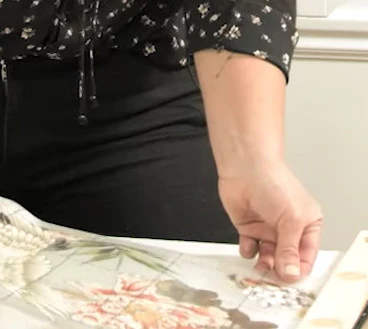- Home
- Innovative Vinyl Wrap Solutions Tailored for Furniture Manufacturers to Enhance Style and Durability
Jul . 26, 2024 18:00 Back to list
Innovative Vinyl Wrap Solutions Tailored for Furniture Manufacturers to Enhance Style and Durability
Vinyl Wrap for Furniture Manufacturers Transforming Surfaces with Versatility and Style
In the ever-evolving world of design and manufacturing, furniture manufacturers are increasingly seeking innovative ways to enhance the aesthetic appeal and durability of their products. One solution that has gained significant traction in recent years is the use of vinyl wrap. This versatile material offers a transformative approach to furniture design, allowing manufacturers to breathe new life into traditional surfaces while addressing both aesthetic and functional needs.
What is Vinyl Wrap?
Vinyl wrap is a thin, adhesive-backed film made from polyvinyl chloride (PVC). It is commonly used in various industries, including automotive, architecture, and furniture manufacturing. For furniture, vinyl wraps can mimic the appearance of wood, stone, metal, and other materials, providing a cost-effective alternative to solid materials. The process of applying vinyl wrap involves carefully measuring and cutting the film to fit the desired surface, which is then affixed using heat and pressure, resulting in a seamless finish.
Benefits of Using Vinyl Wrap in Furniture Manufacturing
1. Aesthetic Flexibility Vinyl wraps come in a myriad of colors, patterns, and finishes, enabling furniture manufacturers to offer a wide range of design options. Whether a client desires a sleek, modern look or a rustic, vintage style, there is a vinyl wrap to match their vision. This flexibility means that manufacturers can easily adapt to trends and customer preferences without overhauling their production processes.
vinyl wrap for furniture manufacturers

2. Cost-Effectiveness Utilizing vinyl wrap can be a more economical option compared to traditional materials, especially for large projects. The cost of vinyl is generally lower than that of solid wood or other materials, allowing manufacturers to save on raw material costs. Additionally, the application process is quicker and less labor-intensive compared to refinishing or repurchasing new materials, further reducing overall expenditure.
3. Durability and Maintenance Vinyl wraps provide a durable surface that can withstand the rigors of daily use. Many vinyl wraps are resistant to scratches, stains, and fading, making them ideal for environments where furniture receives heavy use, such as offices, schools, and homes with children. Moreover, cleaning vinyl-wrapped surfaces is typically hassle-free, requiring only mild soap and water, which enhances their appeal to consumers.
4. Environmental Impact In an age where sustainability is of paramount concern, vinyl wraps present an eco-friendlier option for furniture manufacturers. Many wraps are made from recyclable materials, and their extended lifespan reduces the need for frequent replacements, leading to less waste in landfills. Furthermore, the lower energy consumption associated with the manufacturing and application of vinyl wraps contributes to a reduced carbon footprint.
5. Customization and Branding For furniture manufacturers looking to establish a unique brand identity, vinyl wraps offer an excellent platform for customization. Companies can create signature looks, integrate logos, or even collaborate with designers to develop exclusive patterns. This level of customization not only enhances brand visibility but also strengthens customer loyalty.
Conclusion
Vinyl wrap has emerged as a game-changing material for furniture manufacturers, offering a perfect blend of style, durability, and cost-effectiveness. As consumer preferences continue to shift towards personalized, sustainable, and aesthetically pleasing products, the demand for vinyl-wrapped furniture is expected to grow. By embracing this innovative solution, manufacturers can not only stay ahead of market trends but also create beautiful, practical, and lasting pieces of furniture that appeal to a wide range of customers. In the dynamic world of furniture manufacturing, vinyl wrap represents an opportunity for creativity and economic efficiency, paving the way for exciting new possibilities in design and production.
Latest news
-
High-Quality Bathroom Cabinet Contact Paper – Durable & Stylish Leading Suppliers, Exporters, Manufacturers
NewsJul.08,2025
-
Premium Wood Contact Paper for Desk – Reliable Suppliers & Exporters
NewsJul.08,2025
-
Premium Contact Paper for Table Top – Durable & Stylish Surface Solution from Leading Manufacturer
NewsJul.07,2025
-
Duplex Board with Grey Back - Reliable Supplier & Competitive Price Manufacturer & Exporter
NewsJul.07,2025
-
Premium White Contact Paper on Cabinets – Trusted Exporters & Suppliers
NewsJul.06,2025
-
High-Quality Duplex Board Packaging for Food Reliable Manufacturer & Supplier
NewsJul.06,2025

